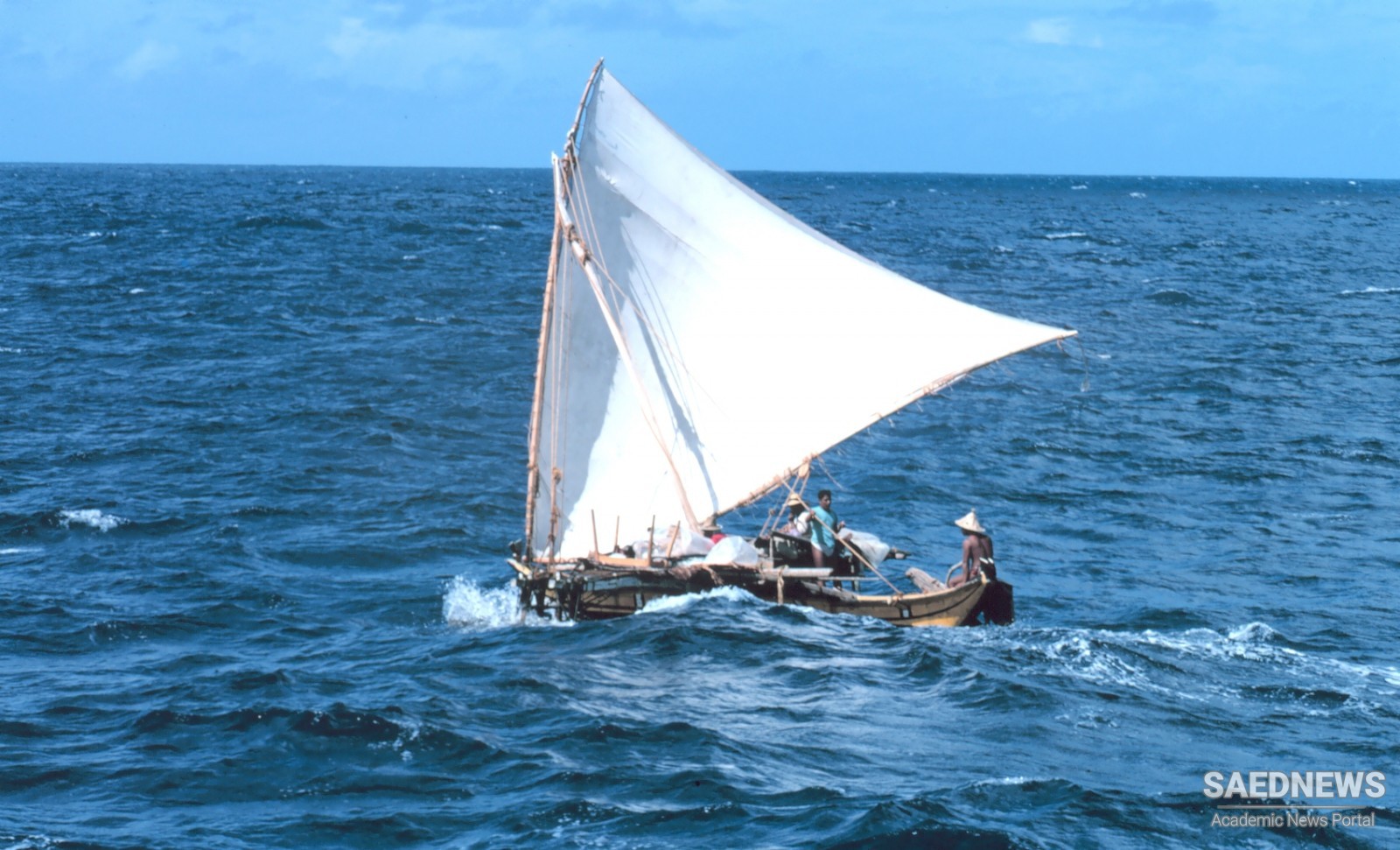Improvements of rigging came slowly over the next two millennia. It has been thought that these made some approach to the fore-and-aft rigging which was necessary if ships were to sail closer to the wind, but for the most part the ships of antiquity were square-rigged. Because of this, the direction of prevailing winds was decisive in setting patterns of sea-borne communication. The only other source of energy was human: the invention of the oar is an early one and it provided the motive power for long sea crossings as well as for close handling. It seems likely, though, that oars were used more frequently in warships, and sail in what it is at a very early date possible to call merchantmen. By the thirteenth century BC , ships capable of carrying more than 200 copper ingots were sailing about the eastern Mediterranean, and within a few centuries more, some of these ships were being fi tted with watertight decks.
Even in recent times goods have been exchanged or bartered and no doubt this was what trade meant for most of antiquity. Yet a great step was taken when money was invented. This seems to have happened in Mesopotamia, where values of account were being given in measures of grain or silver before 2000 BC . Copper ingots seem to have been treated as monetary units throughout the Mediterranean in the late Bronze Age. The first offi cially sealed means of exchange which survives comes from Cappadocia in the form of ingots of silver of the late third millennium BC : this was a true metal currency. Yet although money is an important invention and one which was to spread, we have to wait until the eighth century BCfor the Assyrians to have a silver standard for the fi rst coins. Refi ned monetary devices (and Mesopotamia had a credit system and bills of exchange in early times) may help to promote trade, but they are not indispensable. Peoples in the ancient world could get along without them. The Phoenicians, a trading people of legendary skill and acumen, did not have a currency until the sixth century BC ; Egypt, a centrally controlled economy and of impressive wealth, did not adopt a coinage until two centuries after that, and Celtic Europe, for all its trade in metal goods, did not coin money until two centuries later still.
As for economic exchange between communities, confi dent generalization about its earliest stages is even more hazardous. Once into the era of historical record, we can see many activities going on which involve the transfer of commodities, not all of them aimed at monetary gain. Payment of tribute, symbolic or diplomatic gifts between rulers and votive offerings were some of the forms it took. We should not rush to be over-defi nite; right down to the nineteenth century ADthe Chinese empire conceived its foreign trade in terms of tribute from the outside world, and the Pharaohs had a way of translating trade with the Aegean into similar notions to judge by tomb-paintings. In the ancient world, such transactions might include the transfer of standard objects such as tripods or vessels of a certain weight or rings of uniform size which therefore present at an early date some of the characteristics of currency. Sometimes such things were useful; sometimes they were merely tokens. All that is wholly certain is that the movement of commodities increased and that much of this increase in the end took the form of the profi table exchanges we now think of as commerce.
New towns must have helped such changes. They sprang up all over the old Middle East, no doubt in part because of population growth. They register the successful exploitation of agricultural possibilities but also a growing parasitism. The literary tradition of the alienation of countrymen from the city is already there in the Old Testament. Yet city life also offered a new intensity of cultural creativity, a new acceleration of civilization of which one sign is the spreading of literacy. In about 2000 BC , literacy was still largely confi ned to the river-valley civilizations and the areas they infl uenced. Cuneiform had spread throughout Mesopotamia where two or three languages were written in it; in Egypt the monumental inscriptions were hieroglyphic and day-to-day writing was done on papyrus in a simplified form called hieratic. A thousand years or so later, the picture had changed. Literate peoples were then to be found all over the Middle East and in Crete and Greece too. Cuneiform had been adapted to yet more languages with great success; even the Egyptian government adopted it for its diplomacy. Other scripts were being invented, too. One, in Crete, takes us to the edge of modernity, for it reveals a people in about 1500 BCwhose language was basically Greek. With the adoption of a Semitic alphabet, the Phoenician, the medium of the fi rst western literature was in existence by about 800 BC , and so, perhaps, was its fi rst surviving expression, in what were later called the works of Homer.


 Metals and Emergence of a New Age
Metals and Emergence of a New Age














































